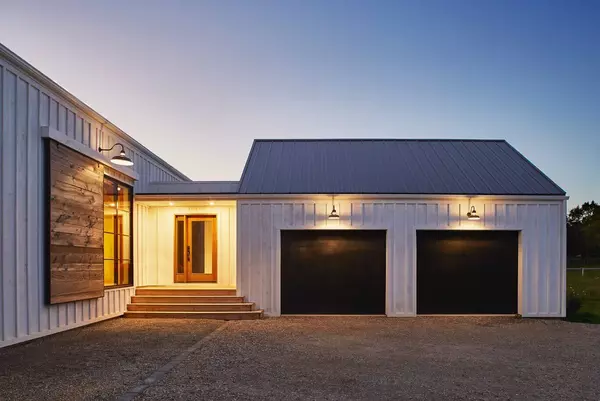What You Need to Know About Polybutylene Piping in Oklahoma Homes | OKC Real Estate Agent
If you're buying or selling a home in Oklahoma—especially if it was built between the late 1970s and mid-1990s—you may have heard the term polybutylene piping. But what does that mean for you? Should you panic? Renegotiate? Walk away? Let’s dive into what polybutylene piping is, why it matters, and how to handle it confidently whether you're buying, selling, or just doing your homework.
💧 What Is Polybutylene Piping?
Polybutylene (PB) is a type of plastic resin that was widely used for water supply lines from 1978 to 1995 due to its affordability and ease of installation. It’s typically gray, blue, or black and often found in homes behind walls, in attics, or crawl spaces.
Over time, it was discovered that polybutylene can degrade when exposed to oxidants like chlorine, which is commonly found in public water. This degradation can lead to cracking, flaking, and ultimately—leaks or bursts. Because of this, it’s often flagged during home inspections.
🏡 Why This Matters in Oklahoma
Many homes in Oklahoma City, Edmond, Norman, and surrounding areas built during that era may still have polybutylene plumbing. Our climate, soil conditions, and water chemistry can contribute to quicker wear in these pipes—especially in areas with higher chlorine levels.
📉 How It Impacts the Home Selling Process
For Sellers:
-
Disclose, disclose, disclose. Oklahoma is a disclosure state, and failing to mention known polybutylene piping could come back to bite you legally.
-
Expect it to come up during inspection. Even if you’re not having issues, an inspector will likely flag it.
-
Be prepared for negotiations. Buyers may ask for a price reduction or request a full or partial repipe.
-
Consider replacing proactively. If your budget allows, replacing the piping before listing can increase buyer confidence and prevent complications.
For Buyers:
-
Don’t freak out—but ask questions. Not all homes with polybutylene are a ticking time bomb, but the risk is real.
-
Budget for future repairs or replacement. Even if the pipes are fine now, you may choose to repipe for peace of mind.
-
Use it as a negotiation tool. If the home has PB piping, you might be able to negotiate the purchase price or ask for seller concessions.
🧾 How It Affects Insurance and Home Warranties
Home Insurance:
-
Some insurers won’t write new policies on homes with PB piping—or they’ll charge higher premiums or exclude water damage coverage.
-
Always ask your insurer directly if they cover homes with polybutylene.
Home Warranties:
-
Many home warranty companies exclude polybutylene piping from plumbing coverage due to the known risk.
-
If a seller offers a home warranty, read the fine print and verify coverage before assuming you're protected.
❓ Smart Questions to Ask
Whether you’re a buyer, seller, or homeowner trying to get ahead, these questions matter:
-
What year was the home built? (1978–1995 are red flag years.)
-
Has any of the plumbing been replaced or updated?
-
Is the piping visible in the attic, crawl space, or water heater area?
-
Have there been any past leaks or water damage?
-
Can I see the seller’s disclosure and inspection report?
🚩 When to Worry—And When Not To
When to Worry:
-
You see signs of degradation (flaking, cracking) or have had multiple leaks.
-
The home has original PB piping and hasn't been maintained or monitored.
-
The piping connects directly to the water heater without proper fittings or shutoffs.
-
Your insurance provider won’t cover you because of it.
When Not To:
-
The system has been stable for years with no leaks or signs of failure.
-
You plan to repipe soon as part of other home improvements.
-
The piping is limited to exterior irrigation or low-risk locations.
-
You’ve negotiated the risk into the home price.
🛠️ What To Do If You Have It
-
Get an inspection or second opinion from a licensed plumber familiar with polybutylene.
-
Start budgeting for a repipe—costs can range from $3,000 to $8,000+, depending on the size of the home and accessibility.
-
Look into PEX piping as a replacement—it’s durable, flexible, and widely used as the modern alternative.
-
Disclose honestly if you're planning to sell.
🤝 Final Thoughts
Polybutylene piping doesn’t have to be a dealbreaker—but it is something to take seriously. Whether you’re buying or selling in Oklahoma, the key is to be informed, transparent, and proactive.
As a local real estate agent, I help my clients navigate issues like this all the time—and I work with trusted inspectors and plumbers who can help you make a smart, safe decision.
Have questions or need help navigating the buying or selling process?
Let’s chat! 405.503.6999 | bgevaza.realtor@gmail.com
Categories
Recent Posts










GET MORE INFORMATION


